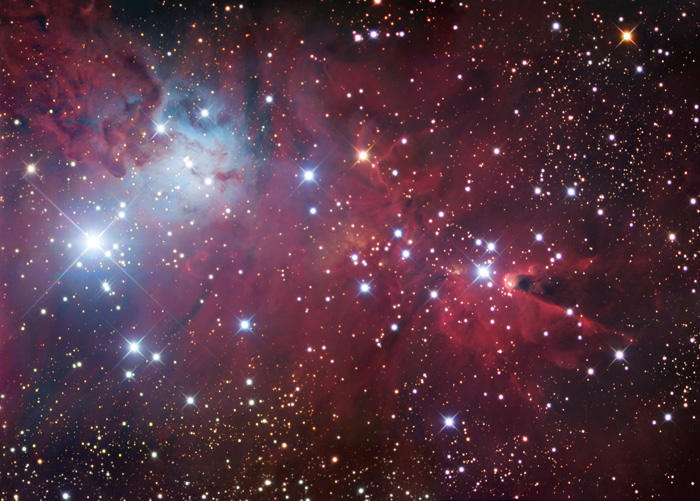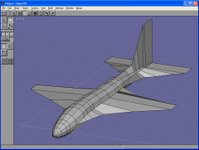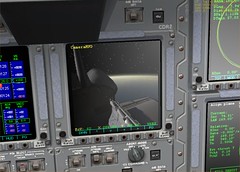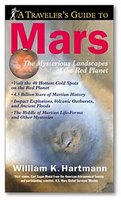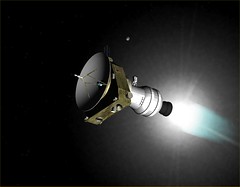
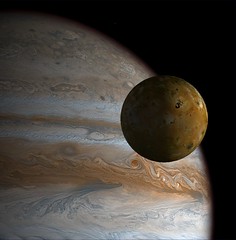
It's the end of another year, and as I tried to do last year at this time, I'd like to write something that sums up the year, makes a brilliant statement, and shows progress (or something). The usual sort of thing. It doesn't feel quite like "brilliant" this evening, but here goes "something" anyway.
In the domain of this blog (which mostly excludes home, family, and work issues, all of which are thankfully going pretty well), 2006 was an interesting year. There were plenty of developments in space, starting from the arrival of Stardust and the departure of New Horizons (pictured in Orbiter above - its target was a planet when it launched but is now called a dwarf planet, though Pluto itself hasn't changed). The arrival of MRO in Mars orbit was another big development, and it is now returning amazing high-resolution imagery of the Red Planet, just as Mars Global Surveyor went off the air after many years of faithful service and zillions of great pictures of the Martian surface (it went out with a bang as signs of very recent liquid water flows were reported based on repeated MGS observations of promising sites). There were also two successful shuttle missions to the ISS, the announcement of NASA's plans for a Moon base, and the good news that a shuttle mission to extend the life of the Hubble Space Telescope was approved. The amazingly long lived Mars Rovers also continue to give us a "local presence" on Mars.
A new version of the Orbiter space flight simulator came out in May, and I was on the beta testing team, mainly so I could update my book Go Play In Space to be available when the Orbiter 2006 was released (Andy McSorley made substantial contributions to the second edition). I spent a lot of time expanding and updating the book, and worked with Andy and later also with Mark Paton on an Orbiter add-on based on the book The Rocket Company. Andy, Mark, and I also spent a lot of time this year on Mars for Less (MFL), a human Mars mission plan developed by Grant Bonin. I had the idea to create a "virtual prototype" of MFL in Orbiter, and Andy and Mark agreed to do most of the work to create an Orbiter add-on for MFL. It turned out to be very complex indeed, but it really proved the point that Orbiter could be used as a tool for fairly detailed mission design (including the challenging EDL phase I showed in a recent YouTube video).
The original point of the MFL exercise was to write a paper for presentation at the Mars Society Conference in Washington, DC in early August. The paper was accepted and written (co-written with Andy, Mark, and Grant), and I presented it at the conference, which was a real thrill. You can find the paper and the presentation at the main Orbiter web site (under References), and more information on the MFL project at Andy's web site.
Part of the reason for my recently increased interest in space and astronomy is related to educational outreach. I think space and astronomy have the power to inspire people of all ages to think positively about science and technology and the future. As many people were, I was inspired by the blog posts of Ms Anousheh Ansari, a self-described private "space ambassador" who visited the ISS this year. She fulfilled her life-long dream and did her best to share her experiences with others through her blog. Although I don't expect to ever go to space myself, I will be a "space ambassador" of sorts starting in 2007 - a JPL Solar System Ambassador, in fact. I will write more about that in the next few weeks, after it's offically announced on JPL's web site (the 2007 ambassadors are not listed there yet). Since Orbiter provides an excellent way to virtually explore the Solar System (as shown in the Orbiter image above, Io with Jupiter), I plan to make extensive use of Orbiter in my presentations, to supplement the materials that JPL will supply.






